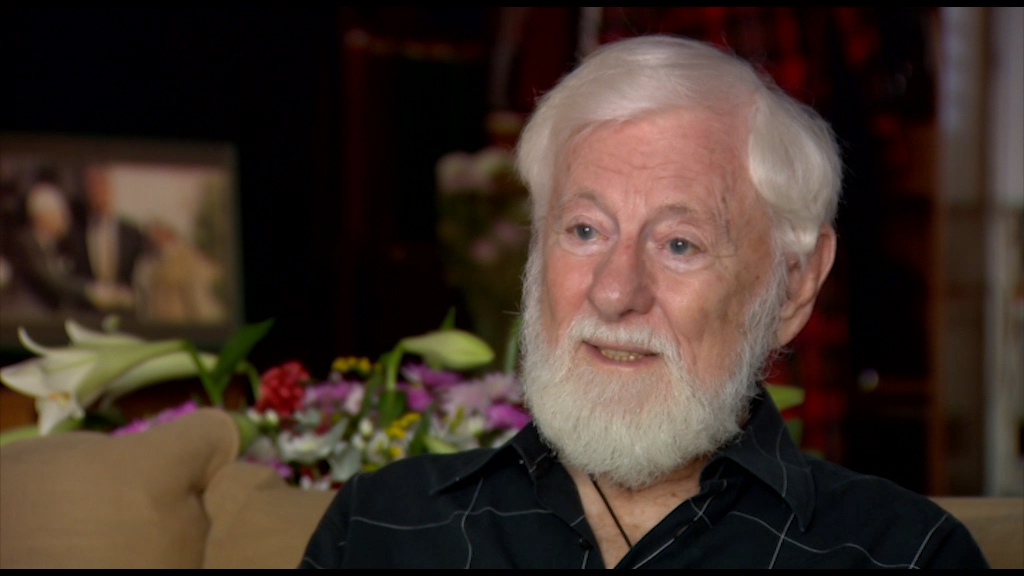NEXT STORY

Held or occupied territories?
RELATED STORIES

NEXT STORY

Held or occupied territories?
RELATED STORIES


|
Views | Duration | |
|---|---|---|---|
| 151. We publish HaOlam HaZeh in Arabic | 9 | 04:41 | |
| 152. The Latrun affair | 10 | 04:35 | |
| 153. The Bar-Lev line | 13 | 02:28 | |
| 154. Held or occupied territories? | 9 | 05:08 | |
| 155. My party gains a second seat in the Knesset | 7 | 04:28 | |
| 156. Rotating party members in the Knesset | 7 | 04:02 | |
| 157. How I met Shalom Cohen | 12 | 04:02 | |
| 158. Falling out with Shalom Cohen | 11 | 03:57 | |
| 159. Shalom Cohen joins the Black Panthers | 16 | 03:10 | |
| 160. Losing the election of ‘73 | 8 | 03:12 |


בינתיים התחילה מלחמת ההתשה, בנו את קו בר-לב. עכשיו, כשאני אומר "בנו את קו בר-לב", מעולם לא הייתה תוכנית לבנות את קו בר-לב, ומעולם לא הייתה החלטת ממשלה לבנות את קו בר-לב. אלא בנו מעוז אחד, ואז ירו על המעוז הזה, והסתננו משני הצדדים, אז בנו בשני הצדדים מעוזים, ולפני שמישהו ידע מה קורה, פתאום היה קו ביצורים לאורך כל התעלה שקראו לו על שם בר-לב, מפני שהוא היה הרמטכ”ל. לא בטוח שהוא נתן את הפקודה הזאת. והתחילה שם מלחמה אמיתית. זו כבר הייתה מלחמה ממש. המצרים לא יכלו להשלים עם הכיבוש הישראלי בסיני, מצרים זה עם, אחר כך למדתי להכיר אותו יותר מקרוב, עם נורא-נורא סימפטי, והלאומיות, החוש הלאומי של המצרים לדעתי עולה על זה של ערבים אחרים. מפני שערבים אחרים יש להם מדינה כמה? פחות ממאה שנה? ממלחמת העולם הראשונה. המצרים יושבים על אדמתם, פעם אמרתי 6,000 שנה אז מצרי אחד תיקן אותי ואומר: "לא, 7,000 שנה”. אלף פה, אלף שם. ואז המצרים התקשרו עם הסובייטים. הסובייטים בנו להם קו של טילים, הגנה אווירית. ובא הנשיא ניקסון נדמה לי עם שר החוץ רוג׳רס והציעו שביתת נשק. וככה הסתיימה מלחמת ההתשה. אבל הישראלים נשארו בסיני וקו בר-לב נשאר.
Meanwhile, the War of Attrition had begun and the Bar-Lev Line was constructed. Now, when I say 'the Bar-Lev Line was constructed', there had never been any plan to construct the Bar-Lev Line, and there was never any government decision to construct the Bar-Lev Line. But one stronghold was constructed, then this outpost was shot at and infiltrated from both sides, then they built strongholds on both sides, and before anyone knew what was happening, suddenly there was a line of fortifications along the length of the Canal called Bar-Lev after the Chief of Staff. I'm not sure he gave this order. And then a real war started there. This turned into an actual war. The Egyptians could not accept the Israeli occupation of Sinai. The Egyptians are an extremely sympathetic nation - later I learned to know them more closely - and very nationalistic. Egypt's national sensitivity is, in my opinion, greater than that of other Arabs because the other Arabs have had a country for how long? Less than 100 years? Since the World War I. Egyptians have been sitting on their land - once I said for 6000 years then one Egyptian corrected me and said: 'No – it's 7000 years'. A thousand here, a thousand there. Then the Egyptians allied themselves with the Soviets. The Soviets built them a line of missiles, air defence. Then President Nixon came, it seems to me with the US Secretary of State, [William] Rogers, and proposed a truce. So ended the War of Attrition. But Israelis remained in Sinai and the Bar-Lev line remained.
Uri Avnery (1923-2018) was an Israeli writer, journalist and founder of the Gush Shalom peace movement. As a teenager, he joined the Zionist paramilitary group, Irgun. Later, Avnery was elected to the Knesset from 1965 to 1974 and from 1979 to 1981. He was also the editor-in-chief of the weekly news magazine, 'HaOlam HaZeh' from 1950 until it closed in 1993. He famously crossed the lines during the Siege of Beirut to meet Yasser Arafat on 3 July 1982, the first time the Palestinian leader ever met with an Israeli. Avnery was the author of several books about the Israeli-Palestinian conflict, including '1948: A Soldier's Tale, the Bloody Road to Jerusalem' (2008); 'Israel's Vicious Circle' (2008); and 'My Friend, the Enemy' (1986).
Title: The Bar-Lev line
Listeners: Anat Saragusti
Anat Saragusti is a film-maker, book editor and a freelance journalist and writer. She was a senior staff member at the weekly news magazine Ha'olam Hazeh, where she was prominent in covering major events in Israel. Uri Avnery was the publisher and chief editor of the Magazine, and Saragusti worked closely with him for over a decade. With the closing of Ha'olam Hazeh in 1993, Anat Saragusti joined the group that established TV Channel 2 News Company and was appointed as its reporter in Gaza. She later became the chief editor of the evening news bulletin. Concurrently, she studied law and gained a Master's degree from Tel Aviv University.
Tags: William Pierce Rogers, Richard Milhous Nixon, Haim "Kidoni" Bar-Lev
Duration: 2 minutes, 28 seconds
Date story recorded: October 2015
Date story went live: 11 May 2017